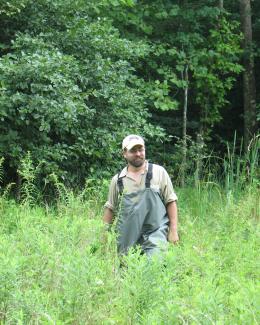Abstract
Aims: Slow decomposition and isolation from groundwater mean that ombrotrophic peatlands store a large amount of soil carbon (C) but have low availability of nitrogen (N) and phosphorus (P). To better understand the role these limiting nutrients play in determining the C balance of peatland ecosystems, we compile comprehensive N and P budgets for a forested bog in northern Minnesota, USA.
Methods: N and P within plants, soils, and water are quantified based on field measurements. The resulting empirical dataset are then compared to modern-day, site-level simulations from the peatland land surface version of the Energy Exascale Earth System Model (ELM-SPRUCE).
Results: Our results reveal N is accumulating in the ecosystem at 0.2 ± 0.1 g N m−2 year−1 but annual P inputs to this ecosystem are balanced by losses. Biomass stoichiometry indicates that plant functional types differ in N versus P limitation, with trees exhibiting a stronger N limitation than ericaceous shrubs or Sphagnum moss. High biomass and productivity of Sphagnum results in the moss layer storing and cycling a large proportion of plant N and P. Comparing our empirically-derived nutrient budgets to ELM-SPRUCE shows the model captures N cycling within dominant plant functional types well.
Conclusions: The nutrient budgets and stoichiometry presented serve as a baseline for quantifying the nutrient cycling response of peatland ecosystems to both observed and simulated climate change. Our analysis improves our understanding of N and P dynamics within nutrient-limited peatlands and represents a crucial step toward improving C-cycle projections into the twenty-first century.





